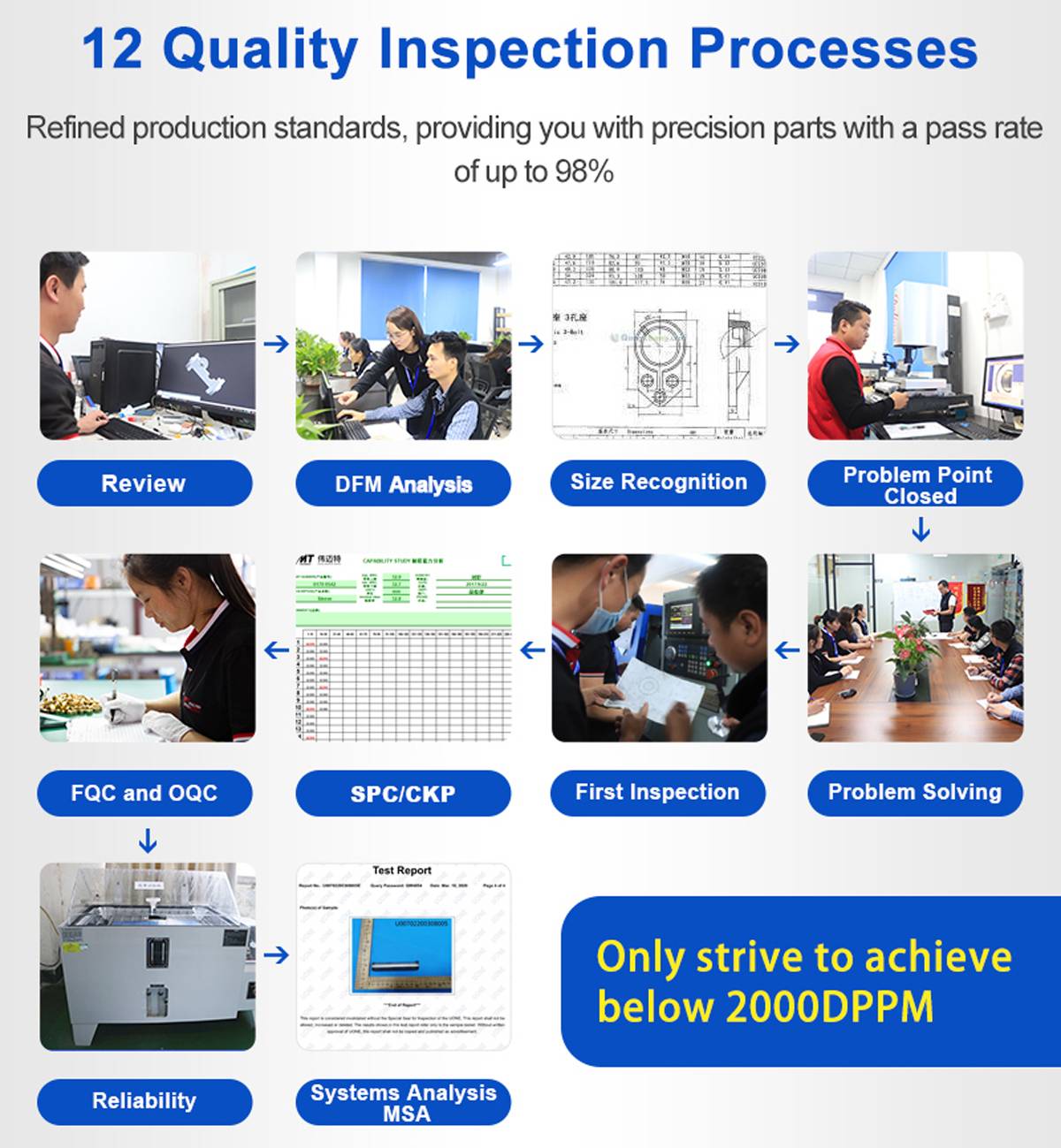15 years one-stop China custom CNC machining parts factory

Hey there I’m VMT Sam!
With 25 years of CNC machining experience we are committed to helping clients overcome 10000 complex part-processing challenges all to contribute to a better life through intelligent manufacturing. Contact us now
 158 |
Published by VMT at Jan 30 2024
158 |
Published by VMT at Jan 30 2024
Introduction:
In the production processes of CNC machining factories, ensuring that product quality meets requirements involves the formulation of detailed quality inspection plans and procedures. Quality inspection is a crucial component of quality control, enabling the timely identification and resolution of issues during production, ultimately ensuring the qualification rate of the final products. This article explores how CNC machining factories ensure product quality through quality inspection plans and procedures.

Development of Inspection Plan:
Develop a comprehensive quality inspection plan based on product characteristics and customer requirements. The plan should specify inspection items, methods, frequency, and acceptance criteria to ensure the comprehensiveness and effectiveness of the inspection work.
Inspection Items:
Inspection items should cover critical characteristics, performance, and appearance aspects of the product. Examples include dimensions, shapes, positional accuracy, surface roughness, material composition, etc.
Inspection Methods:
Choose appropriate inspection methods for each inspection item, such as gauge measurements, optical inspections, metallographic analysis, etc. Ensure the selected methods accurately reflect product characteristics and comply with relevant standards and customer requirements.
Frequency and Acceptance Criteria:
Determine the frequency of inspections, such as first-article inspection, in-process inspections, and sampling inspections. Simultaneously, establish clear acceptance criteria to accurately judge the qualification of products.
Recordkeeping and Reporting:
Thoroughly record inspection results and generate regular quality reports for tracking and analysis of product quality.

II. Quality Inspection Procedures:
Inspection Workflow:
Develop a clear quality inspection workflow, outlining inspection responsibilities and operational requirements at each stage, from raw material intake to finished product delivery. Ensure the rationality and operability of the process to guide practical operations effectively.

Personnel Training:
Provide professional training for quality inspection personnel to enhance their skill levels and awareness of operational norms. Ensure they can proficiently operate inspection equipment and methods, strictly following established procedures.
Equipment and Tools:
Supply suitable inspection equipment and tools, ensuring their precision and reliability. Regularly maintain and upkeep equipment and tools to guarantee their proper functioning.
Operational Norms:
Develop detailed operational norms, clearly defining the operational steps and considerations for each inspection task. Norms should be practical and instructive to facilitate adherence by inspection personnel in real-world scenarios.
Issue Resolution:
Establish a mechanism for addressing issues discovered during inspections promptly. Analyze the root causes of non-conforming products, implement corrective measures, and prevent the recurrence of problems.
Continuous Improvement:
Periodically evaluate the applicability and effectiveness of quality inspection procedures based on quality reports and market feedback. Address identified issues for improvement, enhancing the efficiency and accuracy of quality inspection work.
Quality Traceability:
Implement a quality traceability system, recording and tracing the production process of each product. By documenting key process parameters, inspection data, etc., investigations and analyses of quality issues become more manageable, ensuring timely resolution.
Communication and Collaboration:
Strengthen communication and collaboration between departments to ensure timely transmission and handling of quality information. Foster information sharing and collaborative work through regular quality meetings and cross-departmental cooperation, collectively elevating product quality.
Quality Assessment and Evaluation:
Establish quality assessment standards and methods, regularly assessing and evaluating the quality inspection work of each department. Objective evaluations help recognize outstanding departments and individuals, while identifying areas for improvement.
Customer Feedback:
Pay attention to customer feedback and suggestions, promptly collecting and analyzing customer evaluations and requirements for products. Adjust quality standards and control methods based on customer feedback to meet customer needs and adapt to market changes. Maintain good communication with customers to enhance satisfaction and loyalty.
Conclusion:
In conclusion, CNC machining factories ensure product quality by developing detailed quality inspection plans and procedures. These plans and procedures cover quality control requirements at various stages from raw materials to finished products and emphasize management measures such as personnel training, equipment maintenance, and issue resolution. Through the application of scientific quality management tools and methods, CNC machining factories can effectively elevate product quality, reduce defect rates, meet customer demands, and enhance market competitiveness. Additionally, factories should continually optimize and refine their quality inspection plans and procedures to adapt to evolving market demands and technological development trends.
Ready To Start Your Next Project?
Get Instant Quote

Request a Free Quote
Send us a message if you have any questions or request a quote. We will get back to you ASAP!